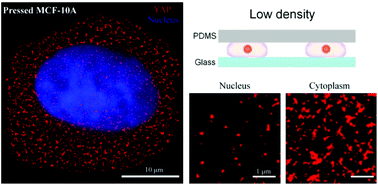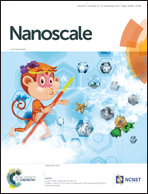Cell contact and pressure control of YAP localization and clustering revealed by super-resolution imaging†
Abstract
Yes-associated protein (YAP) is well known for being an effecter of the Hippo signaling cascade that plays a critical role in organ size control, tumorigenesis, and regeneration. As YAP is a transcriptional coactivator, nuclear accumulation is a crucial determinant of its function. Numerous investigations have provided insights into the regulation of YAP, such as upstream molecules of the Hippo pathway, cell contact inhibition, and mechanical forces. However, detailed information regarding YAP spatial localization and organization in cells remains uncertain, and how mechanical signals control YAP distribution and function is not fully known. Therefore, we used one of the super-resolution imaging techniques, direct stochastic optical reconstruction microscopy (dSTORM), combined with confocal microscopy, to solve these problems. We found that YAP is mainly distributed in clusters in the cells, and that both cell contact and pressure on cell surfaces promote the nuclear-to-cytoplasm translocation of YAP and its phosphorylation, but weaken the clustering of nuclear YAP and its transcriptional activity. Moreover, we found that pressure regulation may be more effective on YAP from cancer cells as compared to normal cells, which could help open a door to target YAP for anticancer drug design.



 Please wait while we load your content...
Please wait while we load your content...